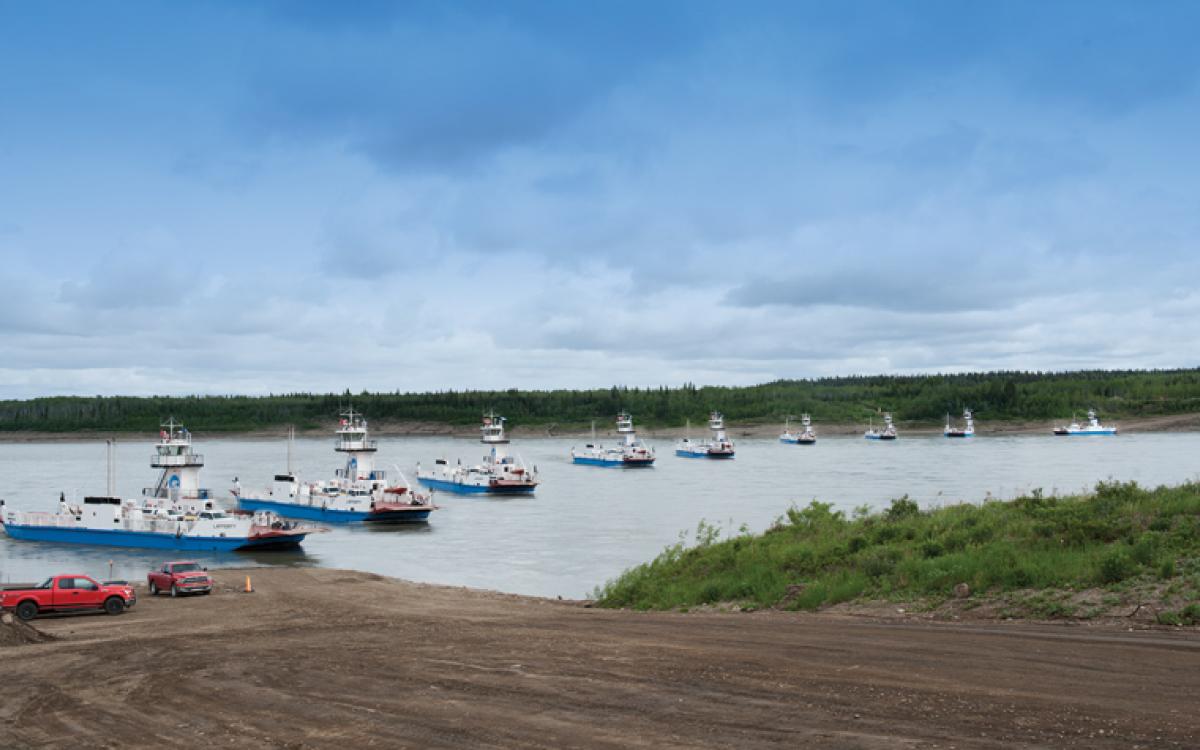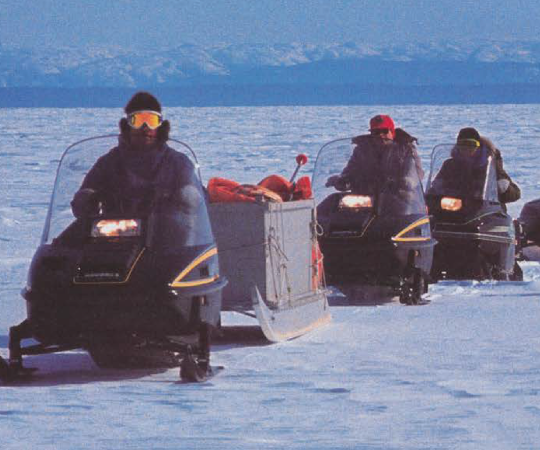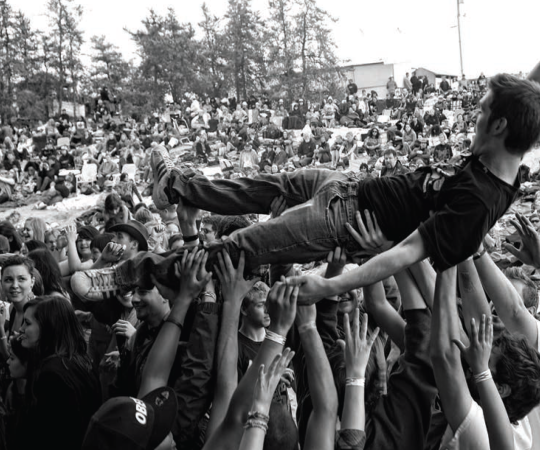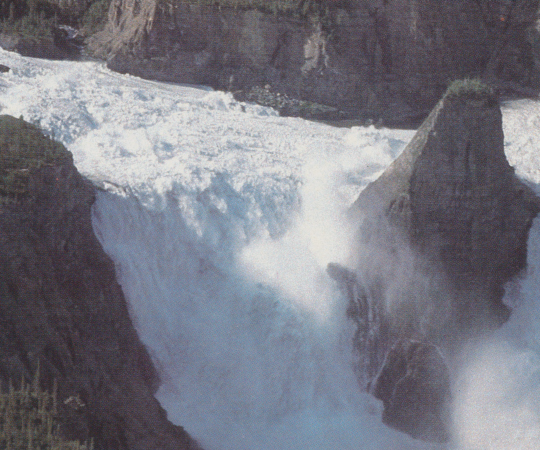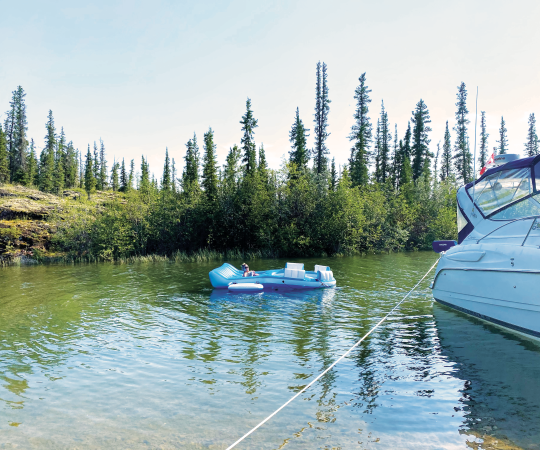The captain nudges the ferry forward until it slams against a gravel bank on the shore. A gate is lowered and a man in fluorescent coveralls waves the idling vehicles forward and then off the boat. The vessel’s engine revs up to stay glued to the landing as dust-coated pick-ups and semis roll on, then the gate comes up and the captain pulls off from the shore. He traverses the Liard River and bumps up against the other side and the gate comes back down. He repeats this, for eight hours each day, for seven days a week, from May to November.
That’s how MV Lafferty ferry captain Graham Cox has spent the last eleven years, in these eight-minute chunks, connecting Fort Simpson and Wrigley motorists to the rest of the territory, crisscrossing the mighty Liard before it flows into the Mackenzie River, a few kilometres downstream.
It’s the start of his 4 p.m. shift and Cox—bearded, squinting behind his shades and periodically grinning—fills out a logbook from his captain’s nest, jotting down wind speed and direction, his crew, the time. “We log all the traffic,” he says. For government statistics? “I don’t really know.”
We pull off from the Simpson side and get out into the Liard. “You’ve gotta crab over,” Cox says—meaning that we’ll cross the river almost sideways to battle the current. The ferry’s equipped with two engines: one in the bow and one in the stern. He backs out using the stern engine, so the bow doesn’t take up rocks from the landing. Once out, the ferry pivots and uses the bow engine until it hits the shore. Then he’ll use the stern engine to straighten up.
“A log cabin came by,” he says, pausing before deadpanning: “No one was on the porch.”
It’s a pretty crude operation. “Basically, we created our own landing with dirt,” says Cox. “We don’t have a permanent landing structure. That would be nice. Down south, everyone has docks. Wouldn’t that be nice?”
The job is monotonous. (“You can learn it in a day,” he jokes.) But there are seasonal challenges. “When we really earn our money is in the fall, when there’s ice. The water drops considerably.” It’s not necessarily windier, but there’s reduced visibility with cold air hitting the warmer water. “You get fog,” he says. “Some days, you come down and you can’t see the end of the boat.” Driftwood poses another problem. “We get heavy lumber. Some nice looking wood, too. You look out and you say, ‘Gosh, I wish I had a sawmill.’”
The Liard loops up from Northern B.C.—three or four rivers merge to create it—and the weather there and in southern Yukon affects the current. Lots of rain upstream can mean trouble. A few years back, the Yukon got a big dump and since the river flows south, then east before heading north, water levels went up all down the Liard. Cox points back to where we got onto the ferry, explaining that the water rose up to the parking lot, a good 10 to 15 feet higher than it is at the moment. The increased flow meant the current was too strong for the MV Lafferty. “We didn’t have enough power to get over the river. We sat for a week.”
“A log cabin came by,” he says, pausing before deadpanning: “No one was on the porch.”
Cox has captained tugboats, tour boats, fish-packers, all across Canada. He once escorted a bear across B.C.’s Kootenay Lake in a cage. We hit land without a break in conversation; today, he’s looking forward to a bit of a vacation. He’s got a place along Lake Winnipeg, where two days from now, he’ll spend a couple weeks relaxing—and the only vessel he’ll be captaining is his canoe.

